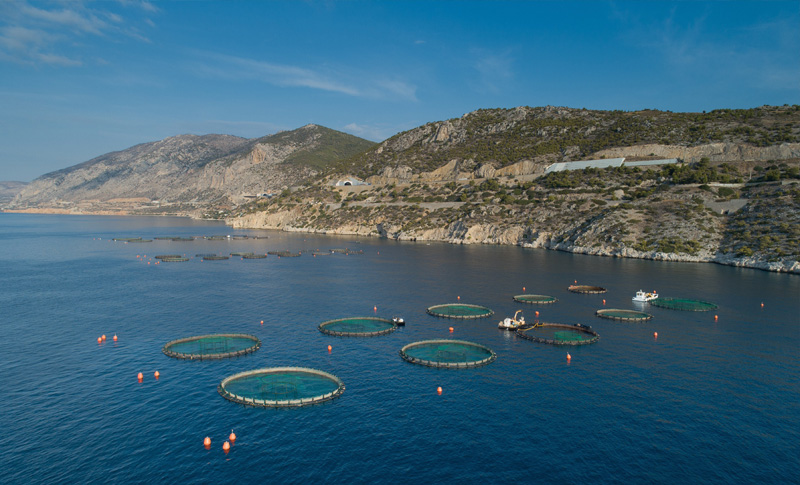Fish farming is the world’s fastest growing food producing sector employing thousands of people in many countries and generating billions in revenue for local economies. One of the major challenges in the industry is to maintain the economic growth rates by ensuring the sustainability of the production by reducing the environmental footprint of the production.
Skironis Aquaculture is focusing its efforts on the regulation and optimization of the fish feed supply. The fish feed as a raw material makes up for the 50% of the production costs and affects the local sea environment. Skironis has implemented new technologies in the production such as underwater cameras and multi sensors that gather the environmental parameters automatically. With the use the underwater cameras the operator can observe the fish welfare, overview the fish feeding process and check in real time if there is a waste of fish feed.
In addition, the cameras are equipped with a biomass estimation feature which minimizes the need of manual fish sampling and weighting. The biomass estimation in each sea cage is the key factor for the supply of the daily ratio of fish feed. A more accurate daily ratio will have a positive impact on the production efficiency and will reduce the overall environmental footprint. Moreover, multi sensors automatically gather and provide information about the environmental parameters such as oxygen, temperature, salinity, currents etc. reducing the need of using manual instruments for data collecting and entry.
In the following video you have all the details.

